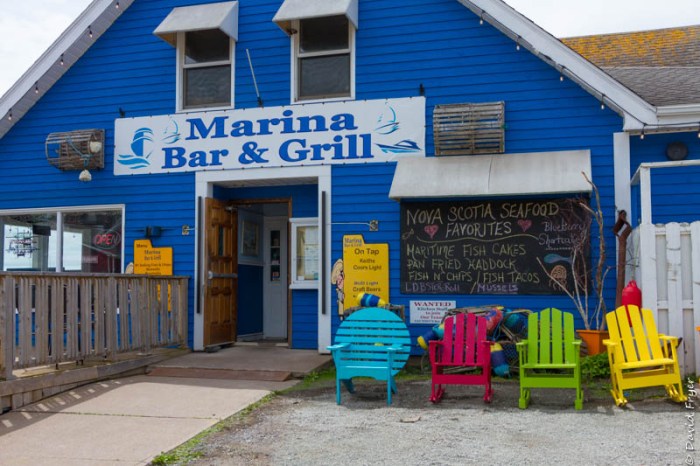
Our final stop in Nova Scotia was the town of Pictou. We planned to stop there for a few days before boarding the Northumberland Ferry to Prince Edward Island. This 75-minute ferry operates seasonally and transports pedestrians and vehicles between Caribou, Nova Scotia and Wood Islands, Prince Edward Island. When we were in Cape Breton, we learned that the ferry had closed due to mechanical issues. Unfortunately, the part needed to repair the ferry had to be made so it would be several weeks before it would be operational again. Fortunately, there is a bridge to the island so we were going to have to drive more than we wanted but we would be able to get there.
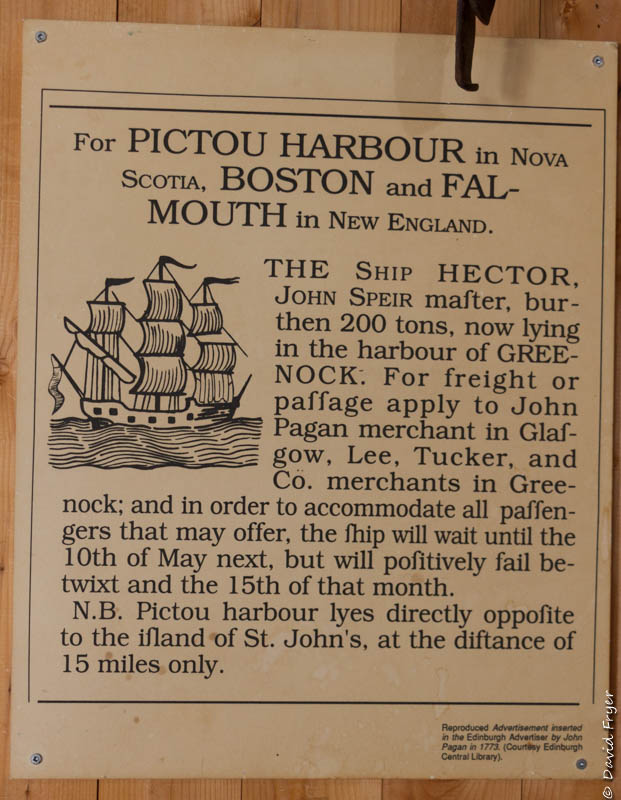
Pictou is a small community with a long history. The First Nations Mi’kmaq resided here during summer months. They called this area “Piktuk” which became “Pictou” when the European settlers arrived.
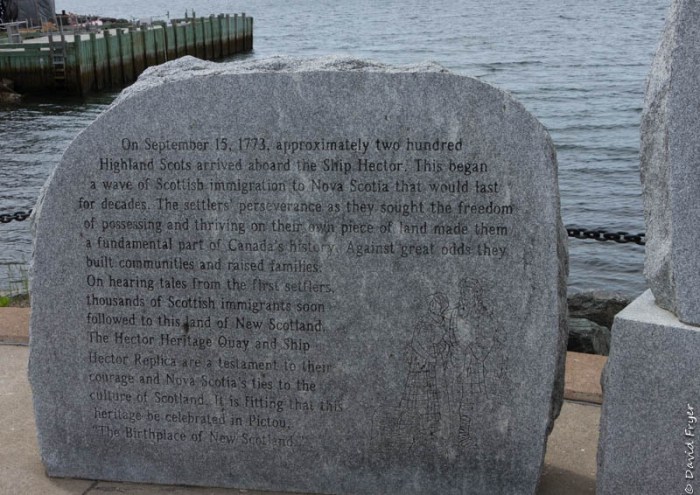
The most notable tourist attractions are located on the Pictou Harbor’s waterfront: the Hector Heritage Quay and the Northumberland Fisheries Museum. The former commemorates the journey of some of the early European settlers to Canada and the latter highlights the community’s love of the sea.
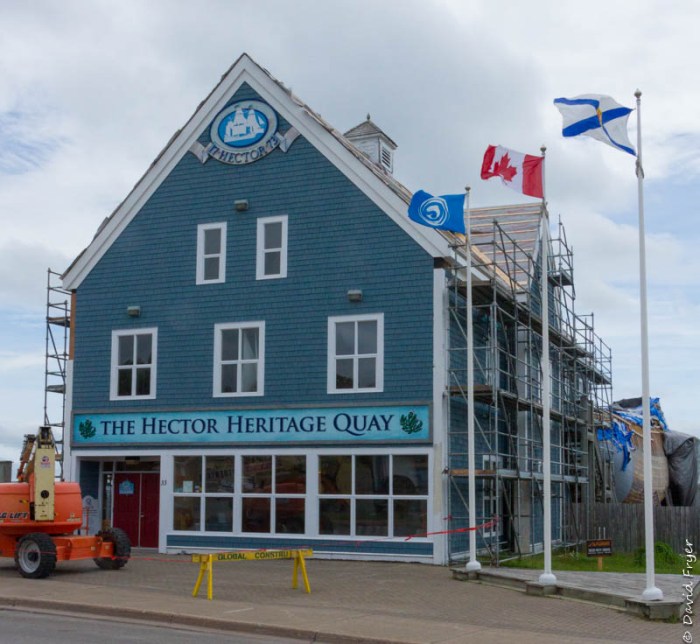
The Hector Heritage Quay celebrates Pictou’s Scottish heritage. As mentioned in a previous post, the Scottish Highlanders came to Canada in search of a better life. Many of them landed in the port of Pictou. Some stayed in the town and there are still several stone buildings downtown that date back to that era. Others migrated to Cape Breton and Prince Edward Island. The three-story museum tells the story of the first group of Gaels that left Scotland aboard the Ship Hector. Due to a bad storm, it took them 10 weeks to make the journey to Canada. During that time, most crossings took 4-6 weeks. Due to the extensive delay, 18 passengers died during the journey. On September 15th, 1773, the ship delivered 189 passengers to Pictou Town. These were the first, but not the last, Scottish immigrants to arrive in Pictou earning it the name “The Birthplace of New Scotland.” Forced from their ancestral lands, in the following decades over 50,000 Gaels emigrated to Nova Scotia and Cape Breton.

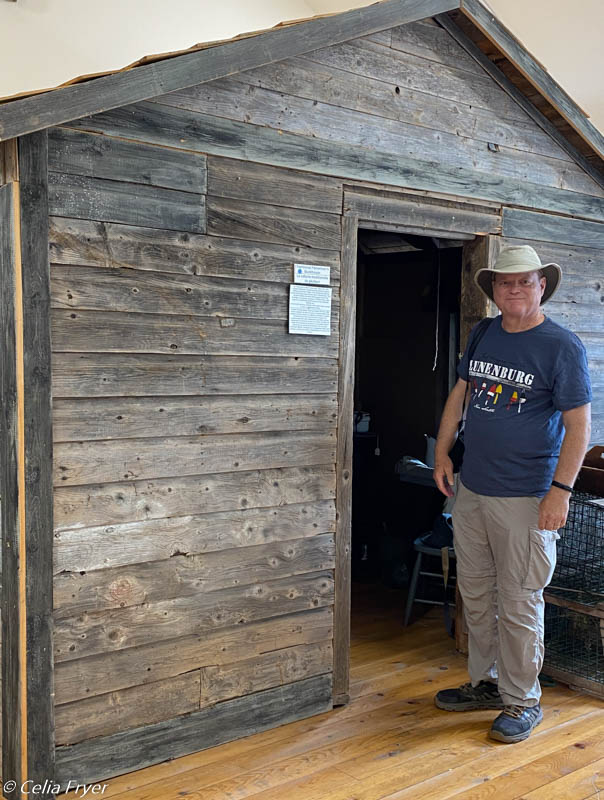
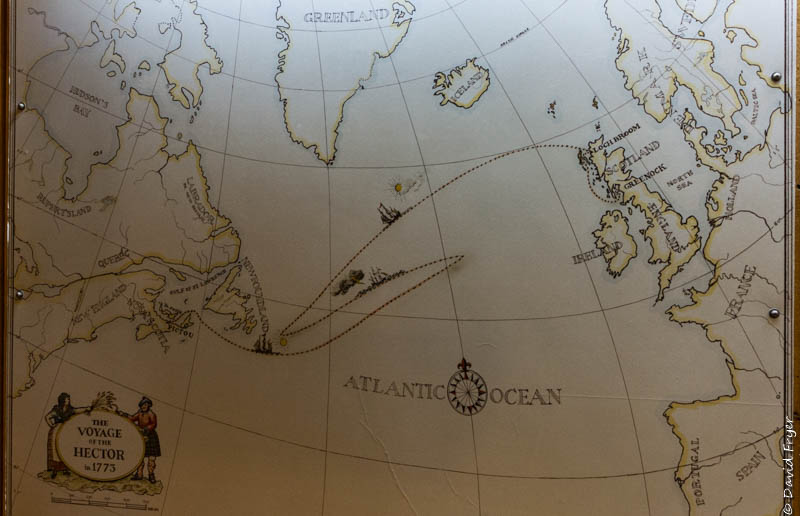
To honor this historic event, the town of Pictou decided to build a museum on the harbor and develop the boardwalk area. To complement the museum, they built a replica of the three-mast Ship Hector. Construction began in 1990 and the ship launched in September of 2000 to much fanfare. The replica is 123 feet in length with a height of 110 feet. Its launch was a source of pride for the community.
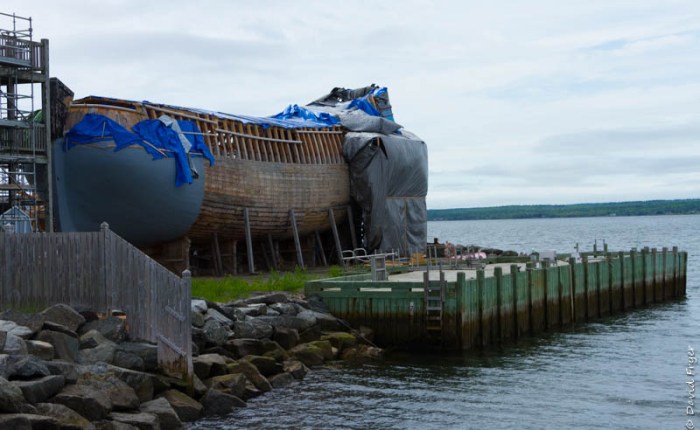
Normally you can tour the ship when you come to the museum but it is currently closed because the ship is in need of some extensive renovations. While David and I were there, we got to talk to the person who is heading up this project. These renovations involve replacing much of the interior wood and beams that have been damaged which will be very costly. He told us that when Hurricane Fiona came through there were lots of downed trees.

People in the area who knew of the renovation efforts called him and asked if he could use the wood and he told them that he could. Word got out and they gathered lots of the trees stockpiling them near the museum. Also a man from another part of Nova Scotia called saying that he had a portable saw mill and offered to come and mill all of the wood for them. He was so happy that they now have the raw materials necessary to restore the ship. The Hector Heritage Quay is a non-profit organization operated by volunteers so all of the restoration is truly a labor of love.
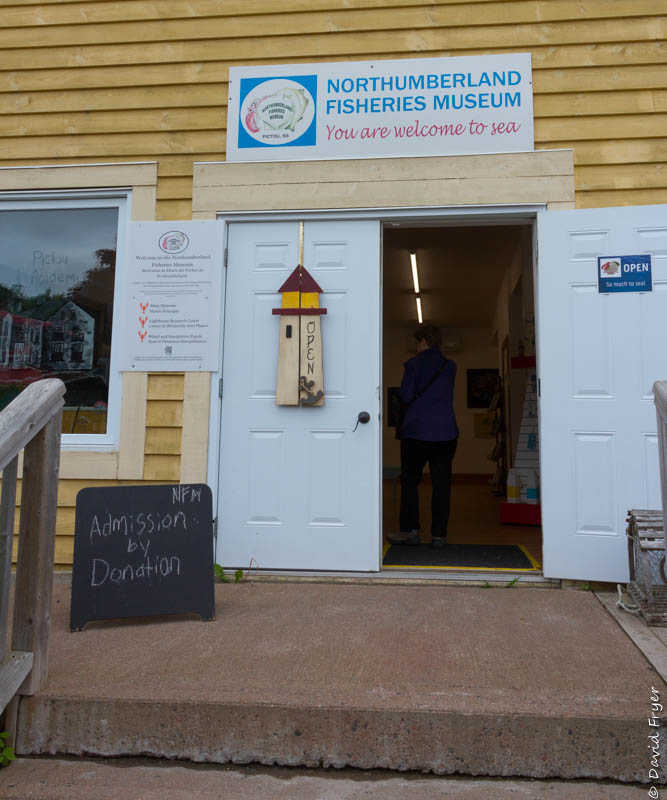
The Northumberland Fisheries Museum, another non-profit charity organization, is located right beside the Hector Heritage Museum on the waterfront. This museum highlights the vital contribution of fishing in the Pictou community. There are a number of exhibits on fishing traps, fishing boats, the canning industry as well as many artifacts and documents.

On display is the “Silver Bullet” which is a famous racing boat made by Sam MacMaster in 1934. Mr. MacMaster was a master craftsman and a native of Pictou.
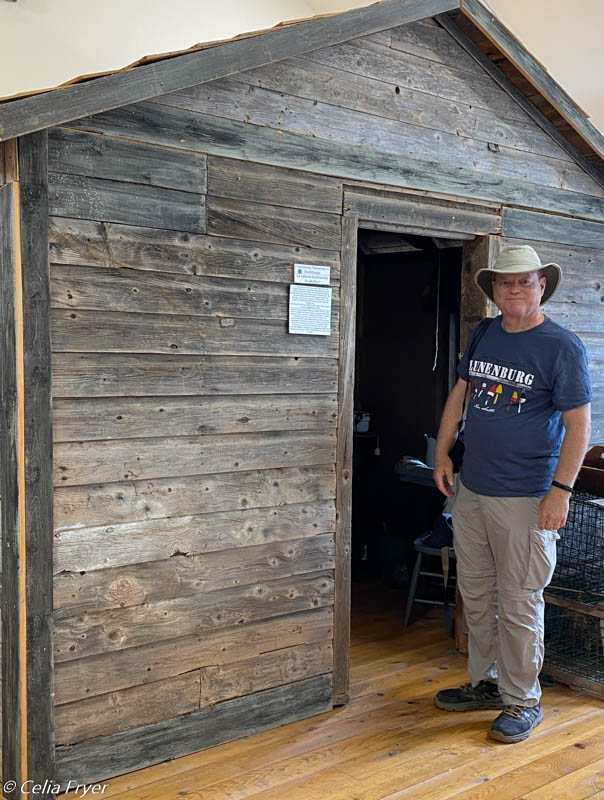
Another large display is the bunker house used by fishermen in the 1930s-1950s. This shelter allowed the anglers to be near their boats during fishing season.
Today, lobstering is the life blood of the fishing industry. David and I met Codie Goodman, the manager and curator of the museum, and she spent a long time talking to us about lobsters. She showed us the museum’s touch tank that was filled with a number of rare lobsters. Each of them had been given a name, often by children who visit the museum. Codie told us that it takes seven years for a lobster to weigh one pound and reach sexual maturity but lobsters also have long lives, typically 50-70 years.

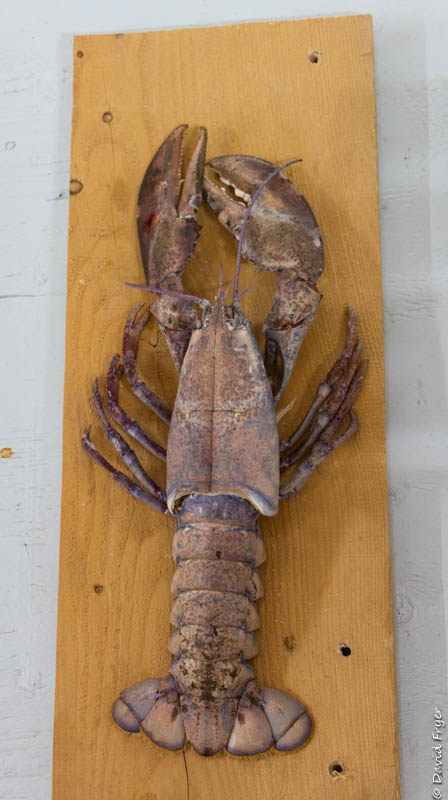
The first thing that we observed at the touch tank was that one of the lobsters was separated from the rest in the tank. She told us that the blue lobster, which is rare (1 in 2 million), had just molted. The jelly-like soft blue lobster was separated from the others to protect it. The old exoskeleton was on display nearby.

She also showed us a number of orange lobster, a rare calico lobster (1 in 30 million) and a cotton candy lobster which is also rare.

Lobsters can grow new appendages and antennae if they lose them. She showed us several that were growing new parts.

We really learned a lot about lobsters and the fishing industry while at the Northumberland Fisheries Museum.
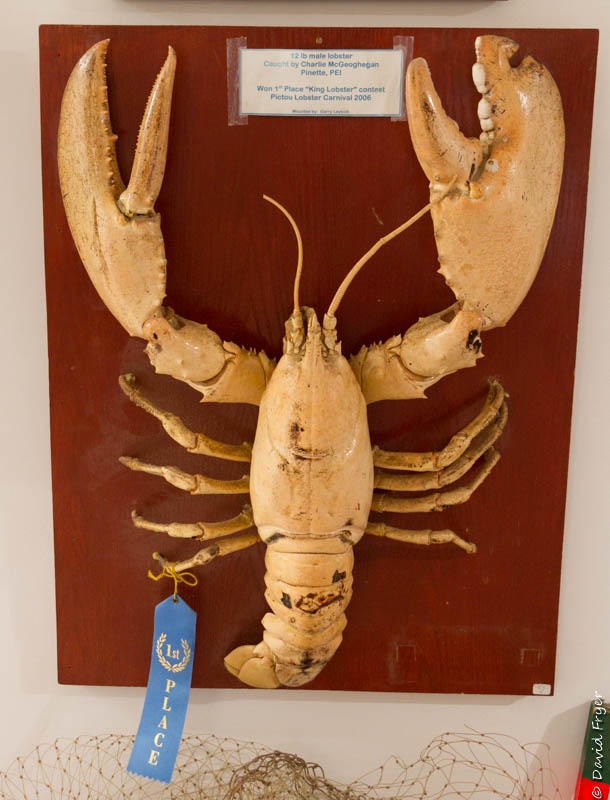
Although we did not get to take the ferry over to Prince Edward Island, we were happy that we got to spend some time in downtown Pictou. Both of the museums were very educational and we loved talking to some of their dedicated leaders.
Now we make our way to Anne of Green Gables’ favorite place, Prince Edward Island. This will be the last province that we will explore in the Maritimes.
